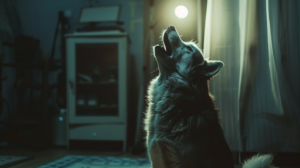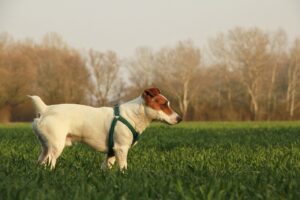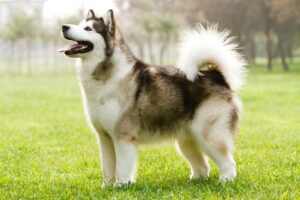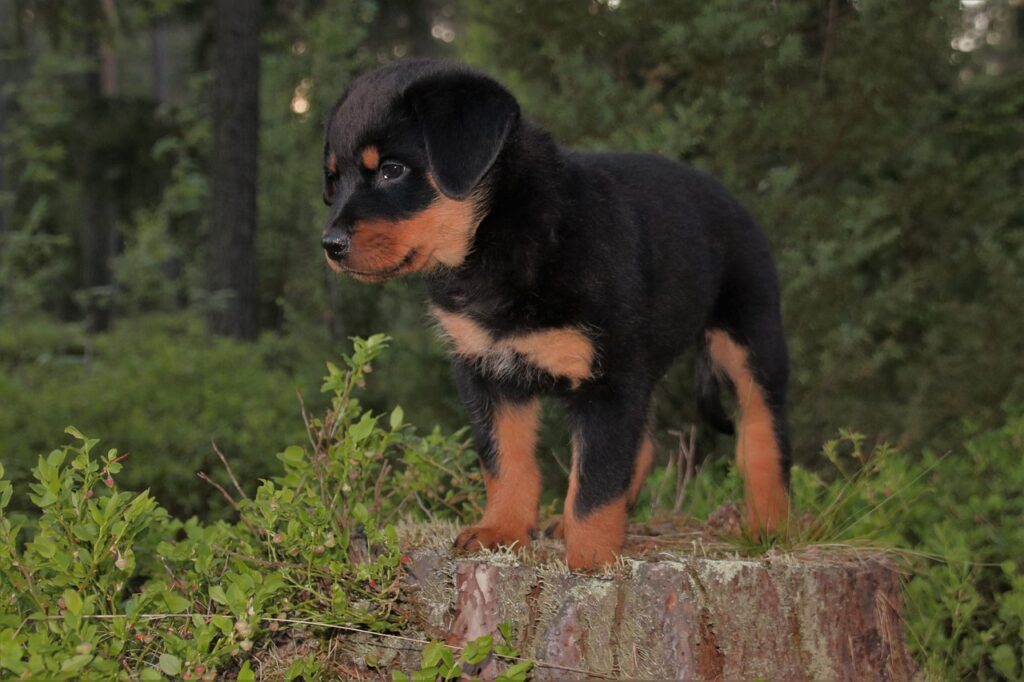
Rottweilers are a breed that symbolizes loyalty and courage, possessing a solid exterior but a heart full of devotion and affection for their families. Their intelligence is remarkable, and they carry an understanding of their strength, making them excellent companions and protectors. These traits align with the Filipino spirit, which values loyalty, courage, and resilience.
Their ability to adapt and please their owners makes them suitable for the dynamic lifestyle in the Philippines. Their bond with their families is vital and respectful, going beyond just being pets, contributing to their growing popularity among dog enthusiasts nationwide.
In this blog post, I promise to provide you with detailed insights into the cost of owning a Rottweiler, factors that influence this price, their annual maintenance expenses, how to identify an authentic breed, key questions to ask your breeder, plus the pros and cons of owning this breed, and an exploration of similar breeds.
How Much Does a Rottweiler Cost in the Philippines?
The price range for a Rottweiler is broad, mainly depending on factors such as pedigree and breeder reputation. However, a general ballpark figure that one might expect to pay for a Rottweiler in the Philippines falls between ₱15,000 to ₱30,000. This range is based on various sources from local marketplaces and pet communities. It’s crucial to remember that these prices are not set in stone and can fluctuate based on factors like lineage, age, and health conditions.
The breed standard calls for a black coat with rust to mahogany markings. Any deviations from this pattern, such as the rare white or blue, aren’t recognized by major kennel clubs and are often considered less desirable, so they don’t command higher prices.
One widespread misunderstanding is that there are different types within the rottweiler breed. The truth is, there’s only one rottweiler breed. Nevertheless, due to regional breeding practices, differences in appearance and temperament can occur. For instance, European rottweilers are typically more substantial with broader heads, whereas their American counterparts lean towards a leaner physique with narrower heads.
Factors Affecting the Price
Bringing a new pup into your home is an exciting time. But when selecting the perfect rottweiler, understanding the factors influencing the price tag can be a game-changer. Here are some of the critical elements that contribute to the pricing of these sturdy, devoted companions.
a. Lineage and Pedigree
The lineage of a puppy can significantly affect its price. Pups descending from award-winning or champion lines often carry a higher cost due to their superior genetics. A pedigreed pup’s price reflects the breed’s quality, and the meticulous care breeders invest in maintaining these high standards.
b. Health Clearances
Another crucial aspect is health clearances. Reputable breeders conduct various health tests to ensure that their pups are free from genetic diseases common to the breed. These clearances add to the breeder’s costs, which are then reflected in the price of the puppies.
c. Breeder Reputation
The reputation of the breeder also plays a role. Established breeders who adhere to ethical breeding practices charge more for their puppies. These breeders prioritize the health and well-being of their dogs over profits.
d. Location
Lastly, geographical location can influence the price. Prices tend to be steeper in areas where demand for rottweilers is high. Conversely, where supply exceeds demand, you may find more affordable options.
Understanding these factors can help prospective owners decide before bringing a new furry friend home. Remember, while the initial cost of a puppy is a significant consideration, the love, loyalty, and companionship they offer are priceless.

The Yearly Expenses
When considering adding a new member to your family, it’s essential to understand the financial commitment involved. For those contemplating welcoming a rottweiler into their household, a detailed breakdown of the yearly costs can provide valuable insight.
1. Food
Feeding a rottweiler is a significant expense. Given their size and dietary needs, you could spend between ₱1,500 to ₱2,000 per month on food alone. This includes a balanced diet of quality dog food and occasional treats.
2. Veterinary Care
Routine healthcare is crucial for maintaining a pet’s well-being. From vaccinations, deworming, and regular vet check-ups, these can add up to approximately ₱5,000 – ₱10,000 annually.
3. Grooming
Rottweilers are relatively low-maintenance when it comes to grooming. However, occasional professional grooming sessions for nail trimming, ear cleaning, and bathing are advisable. This might set you back around ₱500 to ₱1,000 per month.
4. Training
Training is essential, especially for a breed as robust as the rottweiler. Professional training costs vary widely, but budgeting around ₱2,000 to ₱3,000 per month would be a safe estimate.
Total Yearly Expenses
Adding these up, the average monthly cost of owning a rottweiler is around ₱4,500 to ₱7,000. Annually, this translates to approximately ₱53,000 to ₱82,000, not including the initial purchase price.
First Year Expenses
| Expense | Cost |
| Rottweiler’s Price | ₱15,000 to ₱30,000 |
| Food | ₱18,000 to ₱24,000 |
| Veterinary Care | ₱5,000 to ₱10,000 |
| Grooming | ₱6,000 to ₱12,000 |
| Training | ₱24,000 to ₱36,000 |
| TOTAL | ₱79,000 to ₱152,000 |
Understanding these costs upfront ensures you’re fully prepared to provide your pup with a loving and caring home.
Guide to Identifying Authentic Rottweiler
In the world of canine lovers, the rottweiler stands as a symbol of strength, loyalty, and confidence. But how can one ensure that the noble rottweiler they’re considering is genuine? Here’s a quick guide to the distinctive physical traits of this remarkable breed:
- Robust Build: Rottweilers are renowned for their robust and muscular structure. Their broad chest and well-defined muscles signify their strength and power.
- Distinctive Coat: Their short, dense coat is predominantly black with clearly defined rust to mahogany markings on the cheeks, muzzle, paws, and legs.
- Head and Muzzle: An authentic rottweiler has a broad head with a rounded forehead. The muzzle is well developed with proportionate, robust jaws.
- Eyes and Ears: Look for medium-sized, almond-shaped eyes that are dark brown. The ears are triangular and hang forward, framing the face.
- Size: Males typically stand 24-27 inches tall at the shoulder, while females are slightly smaller, standing 22-25 inches tall.
- Tail: Historically, rottweilers had their tails docked, but many modern breed standards now advocate for a natural, unaltered tail.
By keeping an eye out for these physical attributes, you can confidently identify a true Rottweiler and enjoy the companionship of this impressive breed.
Questions to Ask Your Breeder
Stepping into the world of dog ownership, especially when considering a breed as majestic as the rottweiler, can be exhilarating. However, it’s paramount to equip oneself with the right questions to ensure a genuine and healthy puppy. This guide will navigate the essential inquiries to make when selecting a breeder.
- Certifications: Begin by asking about the parents’ certifications. A reputable breeder should provide proof of Philippine Canine Club Inc (PCCI) registration, validating the puppy’s pedigree.
- Health Testing: Inquire about the health testing undergone by the parents. Rottweilers are prone to certain genetic conditions like hip dysplasia. The breeder should provide health certificates demonstrating that the parents are free from such issues.
- Socialization Practices: A crucial aspect unique to rottweilers is their need for early socialization. Ask the breeder about their socialization practices to ensure the puppy will grow into a well-rounded adult.
- Parents’ Appearance: Request to see the puppy’s parents. This will indicate how the puppy might mature and confirm that the breeder isn’t a broker.
- Diet Details: Ask about the puppy’s diet. Rottweilers require specific nutrition due to their robust structure. The answer will reflect the breeder’s knowledge and care for the breed.
- Litter Information: Inquire about the number of litters the mother has had. For the mother’s well-being, she shouldn’t have more than one litter yearly.
- Breeder’s Knowledge: Gauge the breeder’s knowledge about rottweilers. They should be well-versed with the breed’s traits, potential health issues, and care requirements.
Selecting a breeder is not merely about asking the right questions but also interpreting the responses effectively. The breeder’s willingness to answer, their depth of knowledge, and transparency are telling signs of their credibility. This investigation will pave the way to bring home a healthy, authentic rottweiler and enjoy the rewarding journey of pet ownership.
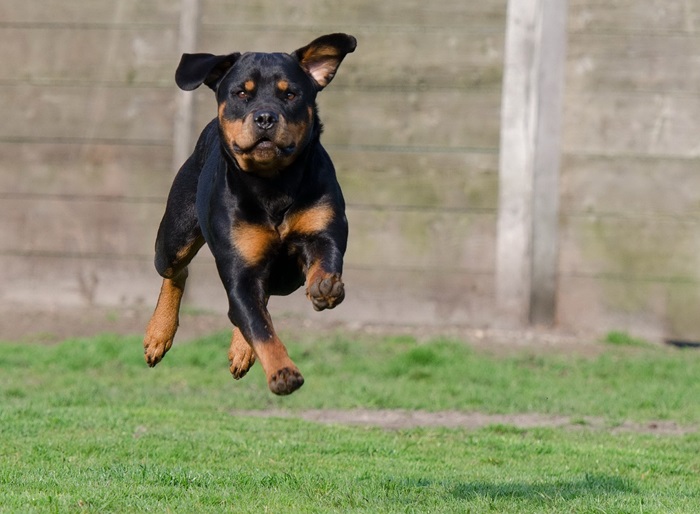
The Rottweiler Reality: Unveiling the Advantages and Challenges
With their robust stature and loyal temperament, Rottweilers are a popular breed among dog enthusiasts. However, like any breed, owning a rottweiler comes with unique advantages and challenges, particularly in the tropical climate of the Philippines.
Advantages
- Loyal Companions: Rottweilers are known for their unwavering loyalty. They form strong bonds with their families and are always ready to protect their loved ones.
- Intelligent and Trainable: This breed is highly intelligent and eager to learn. With consistent training, they can master commands and tricks, making them excellent working dogs.
- Family-Friendly: Despite their imposing appearance, rottweilers are gentle and affectionate with their family members, including children.
- Active Lifestyle Partner: They can be your perfect companion if you enjoy an active lifestyle. They love physical activities and thrive in environments where they can exercise regularly.
Challenges
- Climate Sensitivity: The warm, humid climate of the Philippines can be challenging for rottweilers. Their thick coat may cause overheating, requiring owners to provide plenty of water and shade.
- Not Ideal for Novice Owners: Rottweilers need experienced handlers due to their size and strength. They require firm, consistent training from an early age.
- Regular Exercise Requirement: These active dogs need regular exercise to stimulate them physically and mentally. Without it, they may develop behavioral issues.
- Moderate Shedding: Rottweilers shed moderately throughout the year, and this increases during certain seasons. Regular grooming is necessary to keep their coat healthy.
Owning a rottweiler can be an enriching experience filled with loyalty, affection, and activity. However, it’s crucial to consider the challenges, especially in the Philippine context, to ensure you can provide the best possible care for these majestic creatures.
Similar Breeds
The world of dogs is vast, teeming with breeds that each boast unique qualities. The Rottweiler’s robust physique, intelligence, and loyalty have won many hearts. However, several other breeds share these admirable traits, offering alternatives to rottweiler enthusiasts.
Firstly, the Doberman Pinscher mirrors the rottweiler’s strength, loyalty, and intelligence. This breed is renowned for its protective nature, making it an excellent choice for a vigilant companion.
Next up, the Beauceron. Known for their versatility and adaptability, these dogs share the rottweiler’s robust build and intelligence.
Now, let’s talk about the majestic Great Dane. Despite their towering size, they are known as gentle giants, sharing the rottweiler’s trait of being wonderful family dogs.
Lastly, the German Shepherd is another breed worth considering. Known for their intelligence and versatility, they are similar to rottweilers in being excellent working dogs. Find out the German Shepherd’s price in the Philippines in this comprehensive guide.
Each of these breeds not only shares similarities with the Rottweiler but also possesses unique qualities. Whether it’s the sleek agility of the Doberman, the adaptability of the Beauceron, the gentle spirit of the Great Dane, or the versatility of the German Shepherd, each breed offers a different flavor of companionship.


